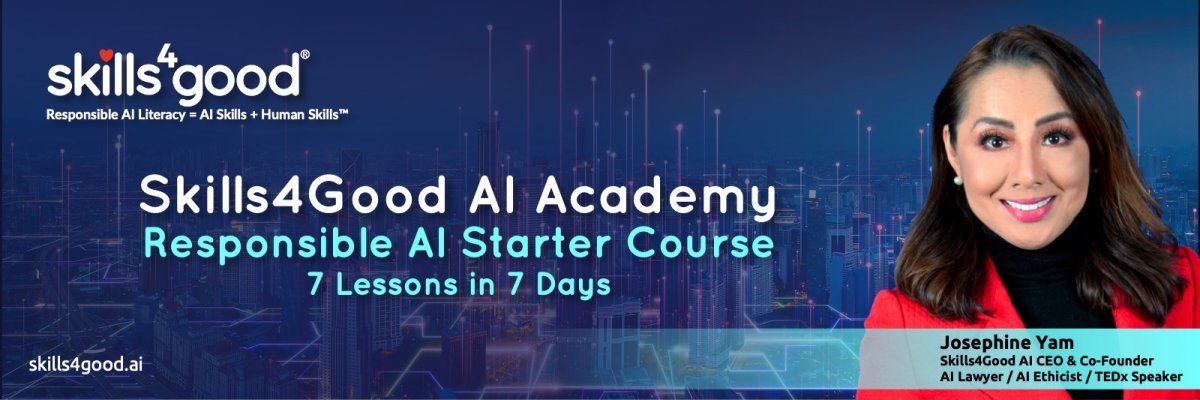The presentation was due in three hours. Carmen stared at her laptop screen. As executive director of a community health center serving 8,000 residents, she'd seen this moment coming.
Her team had spent weeks perfecting the slides. All AI-generated content. All focused on efficiency metrics - reduced wait times, improved scheduling, cost savings per patient. Professional? Absolutely. Comprehensive? Check. Ready to submit? She thought so.
Then her board chair's email message shattered her confidence: "Foundation just told me they've seen fifteen identical presentations this month. Every health center is showing the same efficiency metrics. They want to see innovation, not just operational improvements."
AI 4 Good in Action
Carmen realized the problem: their AI-generated slides highlighted operational successes, but behind every efficiency metric was a story AI couldn't tell.
With three hours left, she couldn't rebuild their data. But she could creatively reframe what their metrics revealed about human impact.
She gathered her six-person team around the conference table and asked, "When Mrs. Rodriguez talks to her neighbors about why she loves coming here, what does she say? How do we connect our efficiency data to that story?"
Mrs. Rodriguez, a diabetic grandmother, had become their unofficial community ambassador. She brought new families to the clinic.
The question changed everything. Suddenly, they weren't thinking about impressing funders. They were thinking about their community.
- Their "reduced wait time" metric told a bigger story.
Maria, their bilingual community health worker, did more than just schedule appointments quickly. She guided families through insurance networks. She linked them with specialists. She served as a cultural bridge between worlds.
The efficiency gain was real. But the human story was richer. - Their "cost optimization" data actually showed their family systems approach.
When they treated Mrs. Rodriguez's diabetes, they didn't stop there. They connected her daughter to mental health resources. They helped her grandson access nutrition programs.
The cost savings were measurable. But the ripple effects through family networks were transformational. - Their "technology adoption" numbers actually demonstrated something remarkable.
Their AI-powered translation service enabled deeper conversations. Patients could express concerns in their native language. They built authentic relationships with English-speaking providers.
The usage metrics were impressive. But the trust-building was invaluable.
Carmen's breakthrough moment: "We're not changing our data - we're revealing what it actually means for the families we serve."
They spent three hours weaving their existing metrics into stories about relationship-building and community impact. They found the story hiding in their numbers. Their original AI slides had completely missed the human connections.
The foundation said yes to their $75,000 request. Every single board member voted for it. One told Carmen afterward: "This is the first proposal that felt like it actually came from your community, not some consultant."
Responsible AI Leadership In Action
- Dilemma: AI-generated content showing same metrics when differentiation was critical
- Creative Decision: Reframe data to reveal human stories behind operational metrics
- Outcome: $75,000 grant by connecting efficiency data to community impact stories
The 3-Question Creativity Framework: When AI Data Needs Human Stories
Carmen learned that being creative with AI involves discovering new links within existing data. It’s identifying human impact stories that algorithms overlook.
- The Story Behind the Metric: What human experience does this efficiency data represent?
- The Community Perspective: When clients talk about us, what do they value that our data doesn't capture?
- The Connection Challenge: How can we connect our operational strengths to the relationships and trust they foster?
Six months later, their program officer praised Carmen's "innovative approach to demonstrating community impact" when granting a separate $150,000 capacity-building award.
That's the ROI of creative storytelling with AI data.
The Human Skill: Creative Thinking in AI
Here's why Responsible AI Literacy = AI Skills + Human Skills™:
- Most people think that creativity is about brainstorming more ideas. Wrong. The real skill is making your ideas memorable.
Everyone now has access to the same information. The difference? Whether people actually remember what you said. - In an AI world, creativity saves you from being forgettable. Every nonprofit can now generate the same reports.
The question is whether your board members will still be talking about your presentation next week. - Creative problem-solving goes deeper than finding better solutions. The breakthrough happens when you question the right problem first.
AI tools hand you answers all day. The magic of innovation lies in knowing which questions to ask.
Over To You
Deploy "Creative Data Storytelling": The practice of finding human stories hidden within AI-generated metrics and analyses.
- Step 1: Identify the human experience: Behind every metric, ask "What human experience does this number represent?"
- Step 2: Shift perspective: "When the people we serve talk about us, what do they value that our data doesn't capture?"
- Step 3: Connect operations to human impact: "How do our efficiency gains create trust and deep human relationships?"
Today's action step: Next time you review any AI-generated data or report, quickly ask: "What's the human story behind these numbers?"
Want A Free Preview of Our AI Academy?
Start your Responsible AI Literacy journey to become a Responsible AI Leader today.
Our free Starter Course provides a 7-day preview of our framework:
Responsible AI Literacy = AI Skills + Human Skills™
featuring practical lessons you can apply immediately: 7 lessons, lifetime community access.
Claim your free Starter Course
You're not just learning AI skills.
You're joining thousands of professionals across sectors globally, building Responsible AI Literacy to become Responsible AI Leaders.
Because Responsible AI Literacy = AI Skills + Human Skills™.
And that's what transforms learners into leaders.
Josephine Yam
CEO & Co-Founder, Skills4Good AI
AI Lawyer | AI Ethicist | TEDx Speaker
Creator of the Responsible AI Literacy Framework
P.S. Carmen's creative data storytelling turned standard metrics into $75,000 success by revealing the human stories behind the numbers. Ready to master all 5 human skills that create Responsible AI Leadership? Claim your free Starter Course


